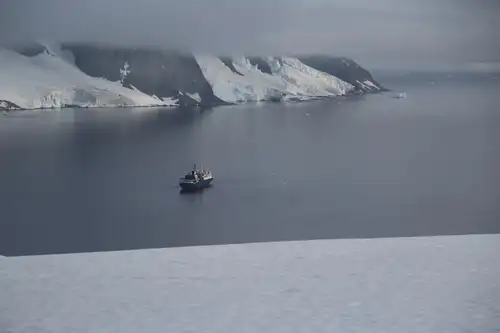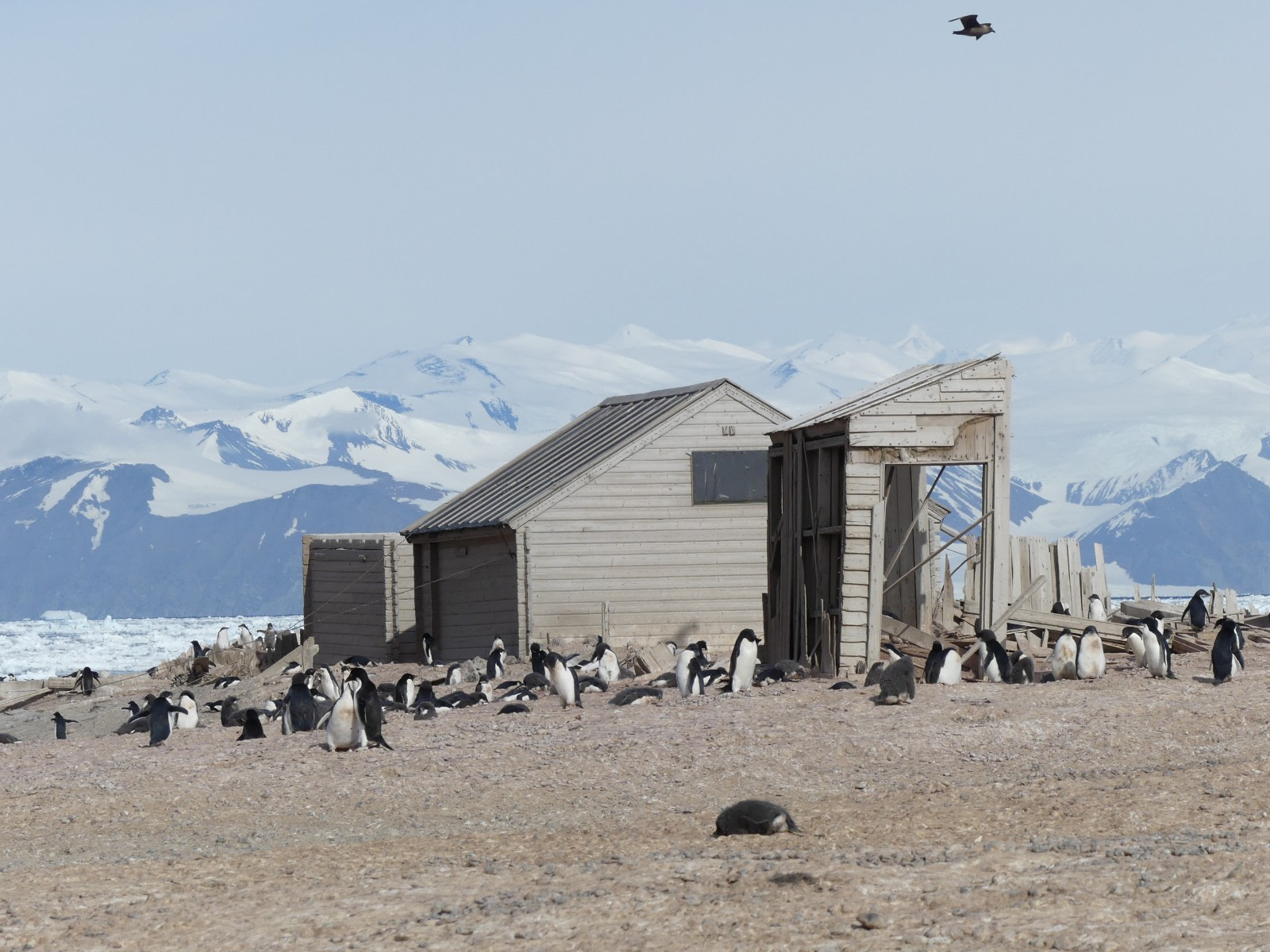Borchgrevink’s huts at Cape Adare hold a significant place in Antarctic history, being the first structures ever built on the continent.
In 1899, Norwegian explorer Carsten Egeberg Borchgrevink and his team arrived at Cape Adare with the goal of becoming the first to spend a winter in Antarctica. The success of this Southern Cross Expedition, officially known as the British Antarctic Expedition of 1898-1900, served as an inspiration for renowned explorers like Shackleton, Amundson, and Scott during the Heroic Age of Antarctic Exploration.
Borchgrevink and his crew constructed two huts from Norwegian spruce at Cape Adare—one for living quarters and the other for storing supplies.
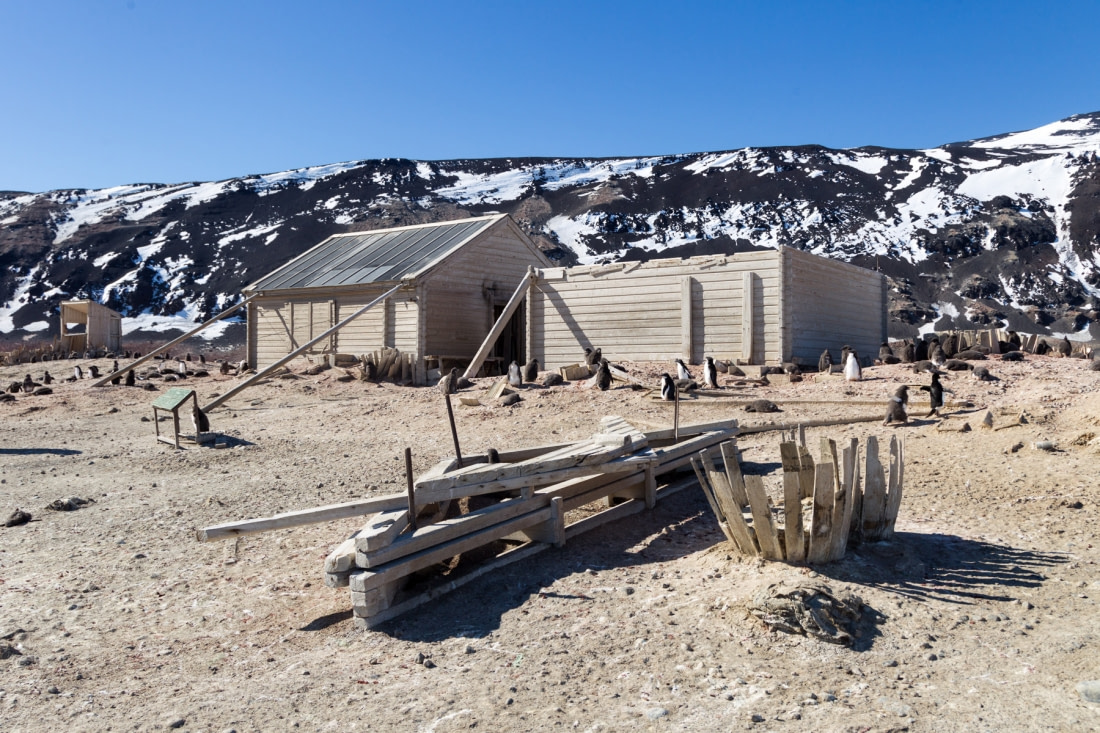
Carsten Borchgrevink and his Antarctic huts
The expedition arrived with 75 Siberian dogs, two tons of dehydrated food, various firearms, and 500 miniature Union Jacks for surveying and extending the British Empire.
The crew built their winter huts using interlocking boards secured with steel tie rods. The roofs were covered with seal skins, weighed down by coal bags and boulders. The living quarters featured a double floor and walls insulated with papier-mâché, sliding panels, and curtains for privacy. Double-glazed windows with exterior shutters helped retain warmth, and a saloon lamp from the ship provided lighting. Borchgrevink’s smaller hut stored medical supplies, provisions, and extra clothing, but eventually became his private study. This hut also had two small rooms off an entrance porch, used as a photographic darkroom and for storing instruments.
The two huts were connected by a roofline extending to the ground, with sails and seal skins providing additional storage and wind protection. Borchgrevink planned to move the huts, provisions, and party to either Coulman Island or Cape Gauss in the summer. After the winter of 1900, he intended to sledge to the South Magnetic Pole.
Work began on dismantling the hut, but it was halted, and the party left on February 2, 1900, heading south to the Ross Ice Shelf before returning to Stewart Island, New Zealand.
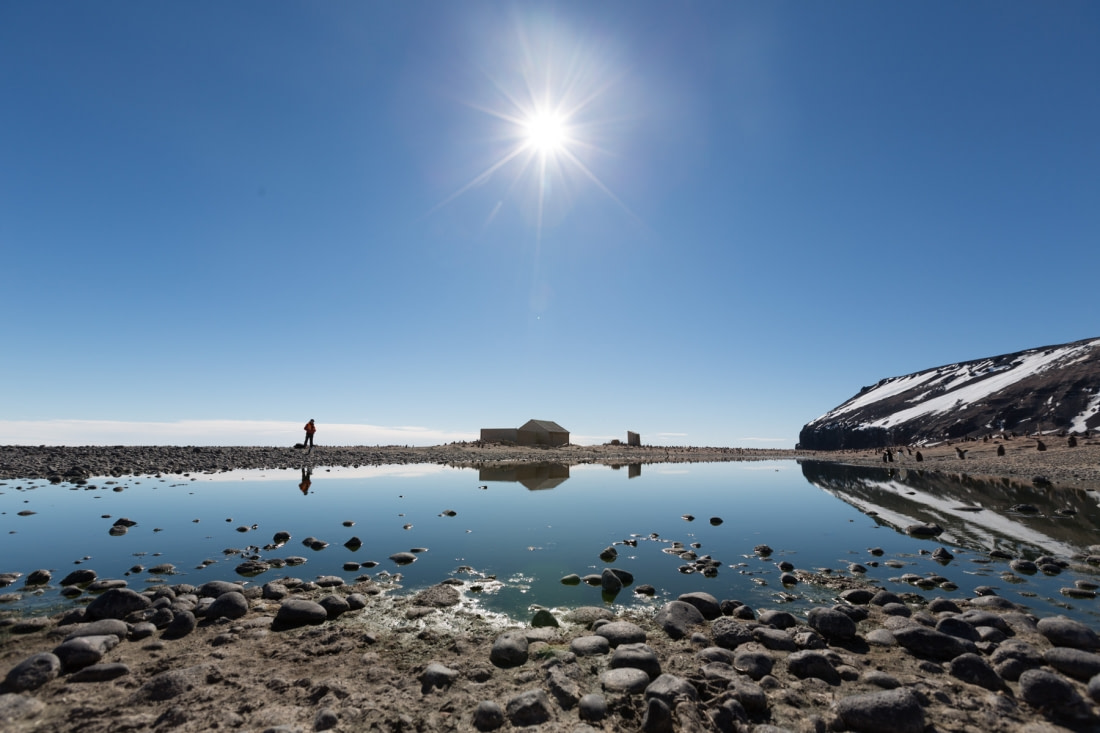
Visitors to Borchgrevink’s huts
The next visit to Cape Adare occurred on January 8, 1902, by the Discovery Expedition led by Robert Falcon Scott. Expedition member Edward Wilson described the site: “The litter around the huts was very interesting and the waste excessive…the huts looked like the centre of a rubbish heap.”
In February 1911, a party from the British Antarctic Expedition, also known as the Terra Nova Expedition, arrived. The ship’s carpenter found weathered cases around the huts and noted, “I stuck a pick into one case and found it was ball ammunition… Luckily, I did not strike the business end of a cartridge.”
Despite being filled with snow, both huts were in good condition. The smaller hut’s roof, dismantled by Borchgrevink’s crew, was covered by a canvas. The hut was partitioned for warmth, with sleeping platforms on boxes around two walls. A blubber stove, ice melter, and a latrine against the outer west wall were also installed.
The Terra Nova crew built another wintering hut near Borchgrevink’s in mid-February. Almost a year later, on January 3, 1912, they left Antarctica, leaving the huts behind.
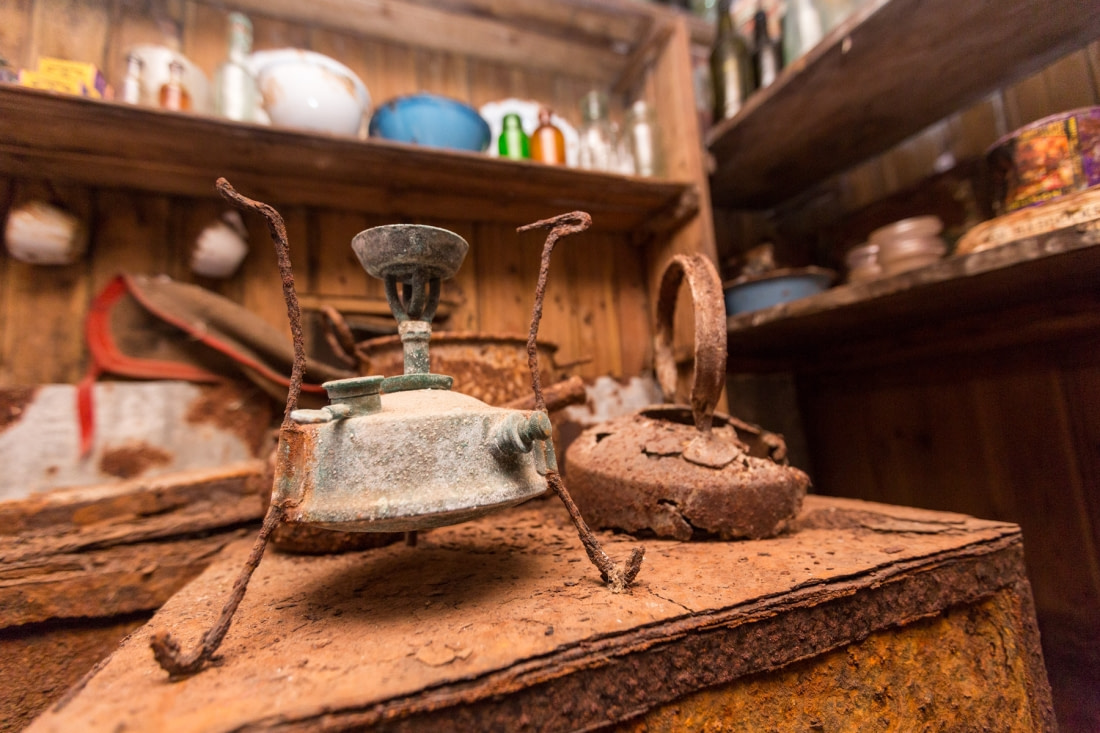
The Borchgrevink huts’ later arrivals
In February 1924, Norwegian whalers on the chaser Star 1 observed Borchgrevink’s huts from offshore. The next visitors arrived in February 1956 with a party from the US icebreaker Edisto, finding scattered supplies and equipment from earlier expeditions.
On January 14, 1961, Brian Reid and Colin Bailey of the New Zealand Biological Party arrived on the US icebreaker Eastwind to study Adelie penguin and skua populations. A storm destroyed their tents, forcing them to take shelter in Borchgrevink’s hut. They found a letter to Petty Officer George Abbot of the Terra Nova Expedition, cologne bottles, plum puddings, and a biscuit tin from Cape Royds. They sealed the hut before leaving.
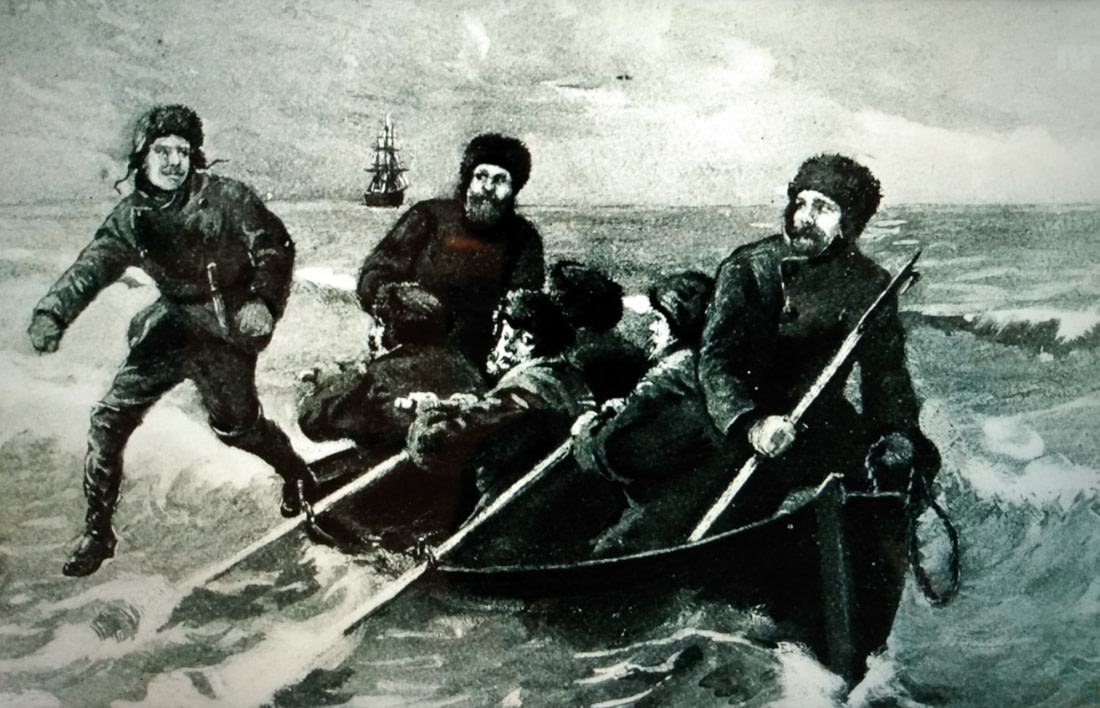
The restoration of Borchgrevink’s huts
In February 1973, two New Zealanders, Shaun Norman and Lawrie Cairns, camped on Ridley Beach. They repaired Borchgrevink’s hut and brought several artifacts back to the Canterbury Museum in Christchurch, New Zealand.
A Canterbury Museum Expedition conducted further repairs and a site survey in early 1982. In 1990, a joint Antarctic Heritage Trust and University of Auckland party arrived at Borchgrevink’s hut for repair work and documentation.

Borchgrevink’s huts today
Today, Borchgrevink’s hut features a rusting stove and shelves lined with tins of lime juice nodules, dried potato, army rations, Wiltshire bacon, Lea and Perrins sauce, and hessian dog coats trimmed with red braids. The walls and bunks bear signatures and caricatures of expedition members.
A fine pencil drawing of a young Scandinavian woman adorns the ceiling above a bunk, accompanied by a Norwegian inscription: “All the bells chime far away, Tidings from the old days, All the flowers turn and look back with a sigh.”
Outside, remnants of the roof, wooden barrels, bags of coal, heavy calibre ammunition, an anchor, provision boxes, and dog tethering pegs with the remains of two dogs can be found. The hut built by the Terra Nova party has mostly collapsed, with only the porch still standing.
Carsten Borchgrevink’s small hut remains in sound condition over a century after its construction. Although the unroofed storage hut shows signs of severe weathering and a buckled floor, it remains a fascinating historical site. Both huts offer a glimpse into a bygone era of Antarctic exploration, captivating both scholars and visitors alike.
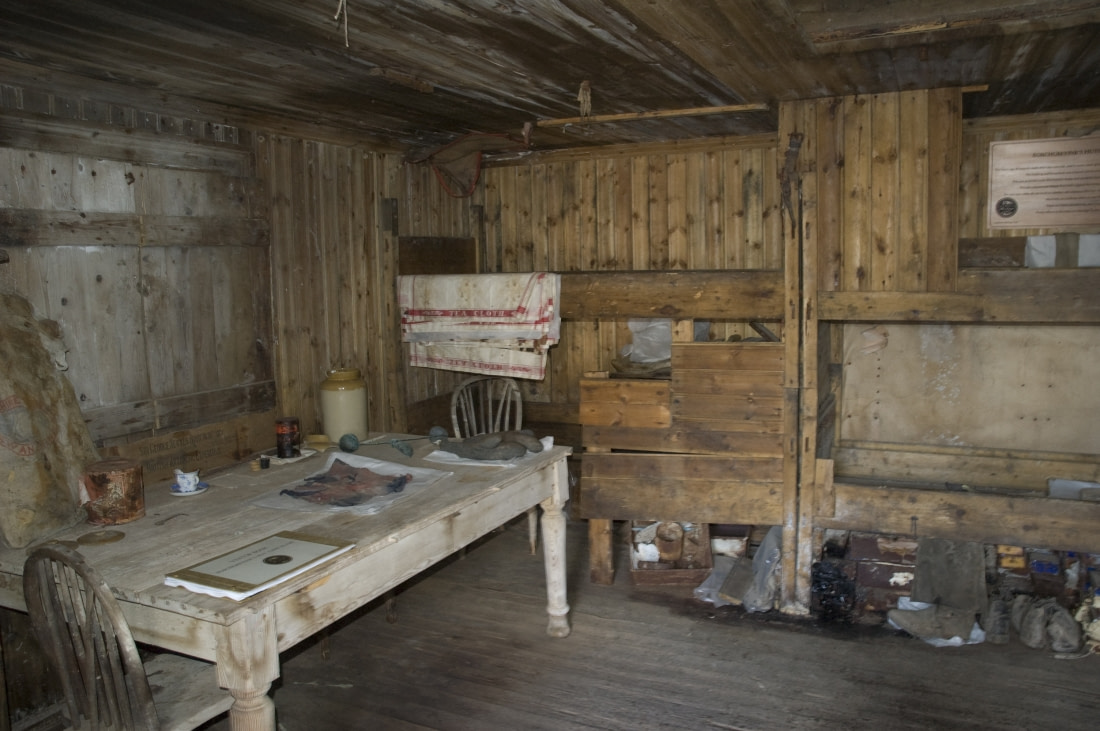
Blog


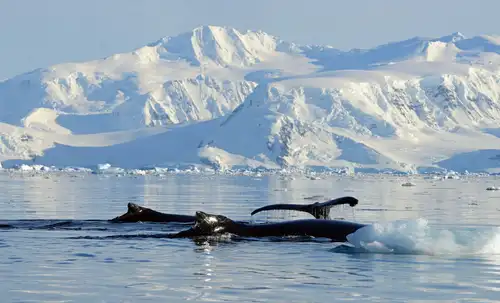
Humpback Whales: the Stars of the Western Antarctic Peninsula
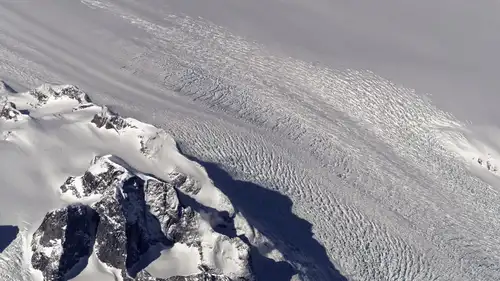
Ice streams and lakes under the Greenland Ice Sheet

Adding Antarctica to Your Seven-Continents Bucket List
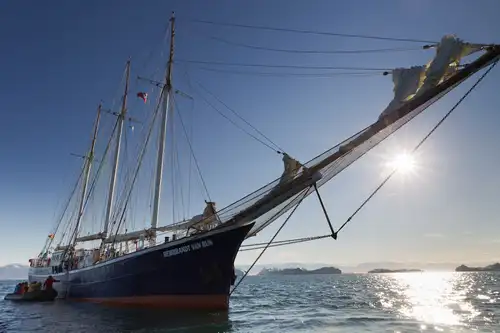
Ancient Arctic Exploration

The Eight Great Penguin Species of Antarctica
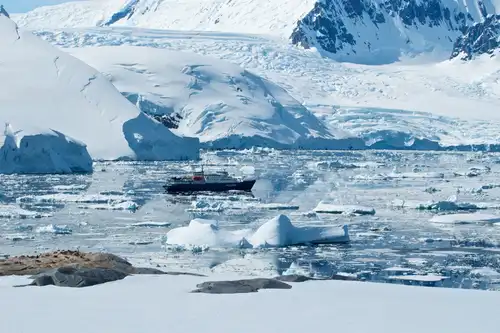
10 Books and Films To Prepare for your Antarctica cruise
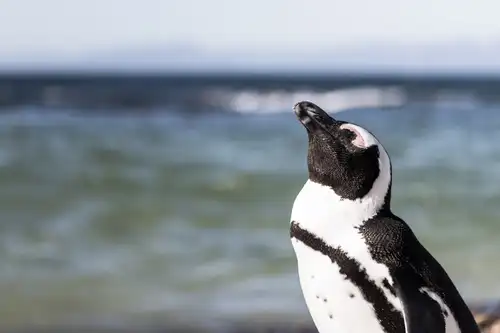
How Arctic Wildlife Differs from Antarctic
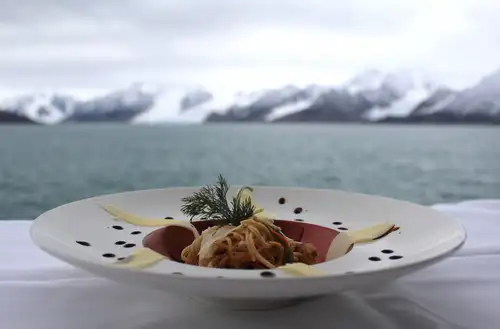
Polar Cuisine in Pictures
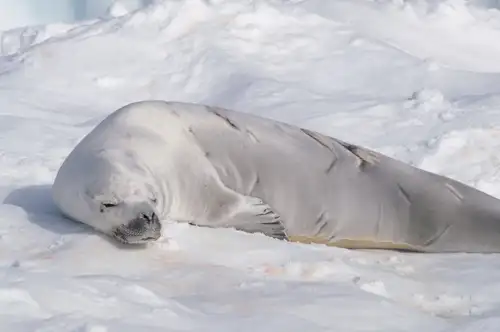
Six Facts About the Crabeater Seals of Antarctica
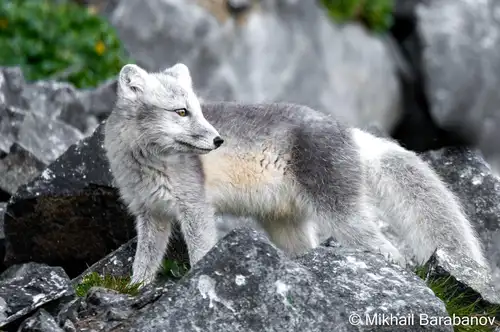
The Small Mammals of the Arctic and Antarctica
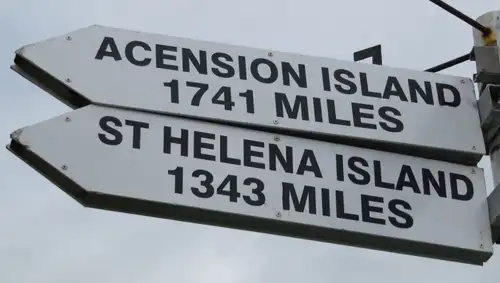
What to pack for your Atlantic Odyssey voyage?
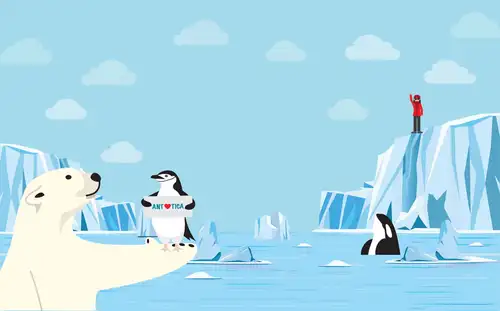
Arctic vs. Antarctica: A Traveler’s Guide
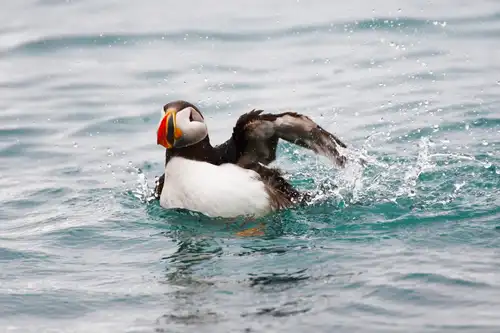
Puffins: Clown Birds of the Atlantic
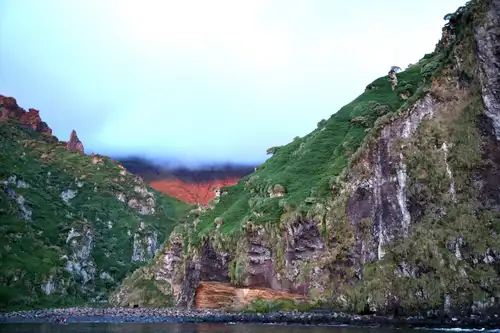
Gough Island: Seabird Capital of the South Atlantic
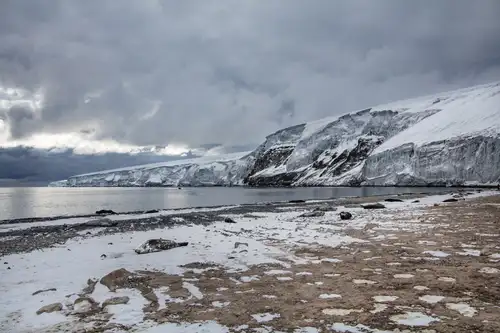
An igneous paradise: Franklin Island
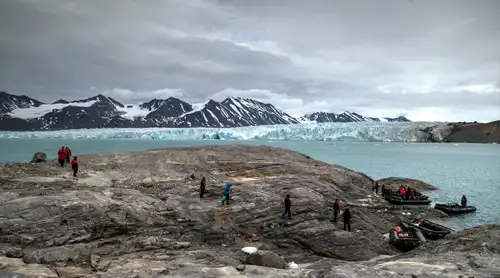
The Enchanting Islands of Svalbard
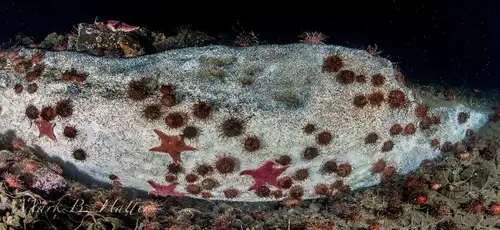
A Diving Dream Fulfilled
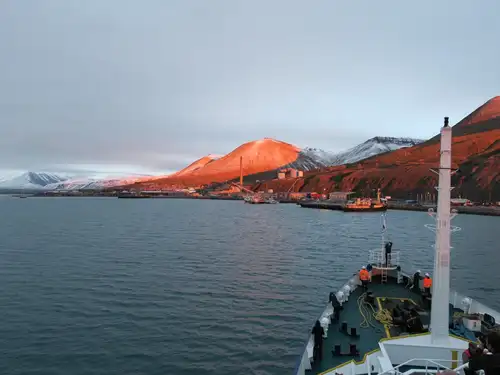
Port Pastimes: 7 Fun Things to Do in Longyearbyen
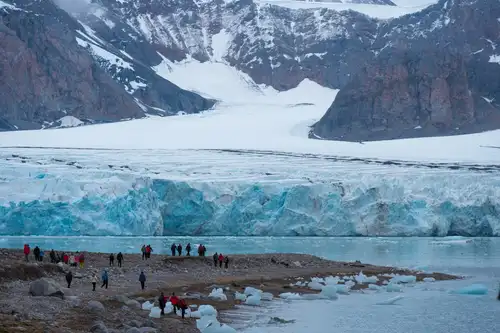
16 Conversation-Starting Svalbard Facts
